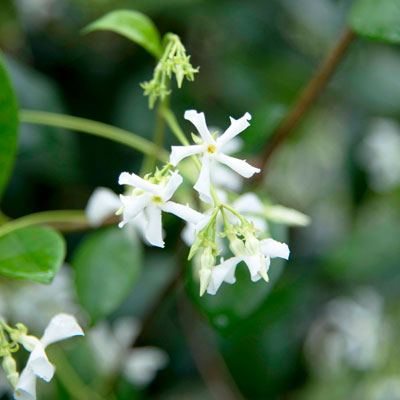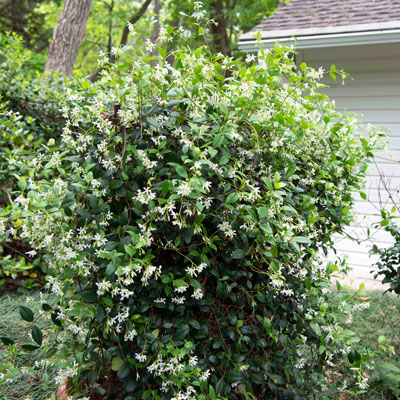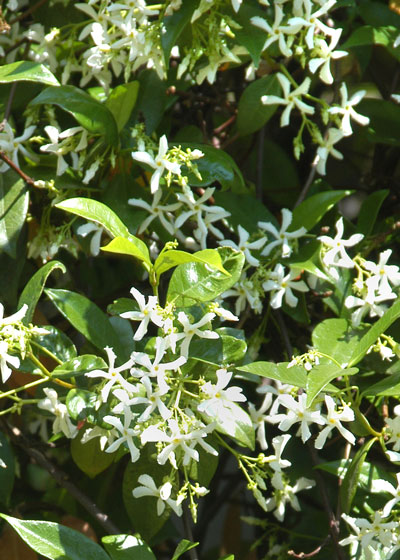Plant of the Week: Star Jasmine

This has been my all-time favorite vine since I was a kid growing up in College Station. The folks in charge of the grounds at A&M used it as a tall groundcover in a bunch of beds over the campus, and spring, when it was in bloom, I purposely walked out of my way from A&M Consolidated just so I could take in that rich, wonderful aroma.
We grew our star jasmine, also known as Confederate jasmine, on a white lattice trellis, and our neighbor had hers over her walk. Our town was in love with this plant.
And then, two years into college, I transferred north to Ohio State and had to leave a lot of my pals behind, this one included. And when Lynn (my new bride) and I moved back to Texas (Dallas), I found that I couldn’t grow it reliably through the North Texas winters. So, with a bit of envy, I say to my South Texas friends, be grateful for this wonderful gem that you have. It’s a treasure.

Facts to know about star jasmine…
Before you rush out to plant it, you’ll want to read through these quick pointers.
• Star jasmine (Trachelospermum jasminoides). Sister to the most popular full-sun groundcover in Texas over the past 50 years, Asian jasmine, T. asiaticum.
• Evergreen, twining vine growing to 15 to 18 feet tall.

• Extremely fragrant white blooms.
• Winter-hardy to Zone 8. Great in South Texas. You’ll see it north of Tyler/Waco/Hill Country line, but it has frozen almost every time I’ve tried it in rural Collin County (DFW area).
• Variety ‘Madison’ is reported to be slightly more winter-hardy, but not enough for me in our landscape.
• Does best given a trellis or fence for support.
• Slightly larger leaves than Asian jasmine and more open growth habit.
• Good in sun or part shade.
• Blooms heavily in late March in South Texas and through mid- or late April farther north.
• Propagated by cuttings, but it’s easiest to get new plants as 1-gallon pots in nursery in spring.
